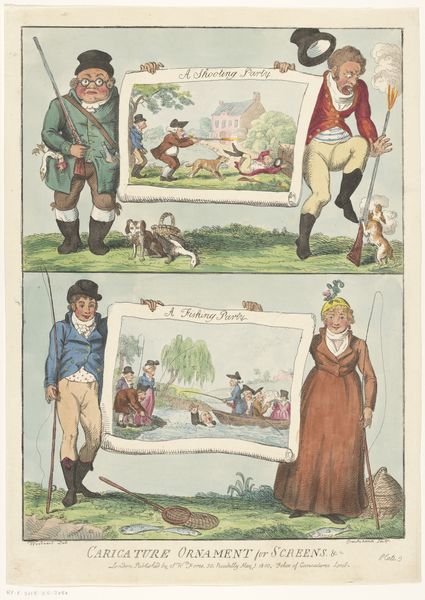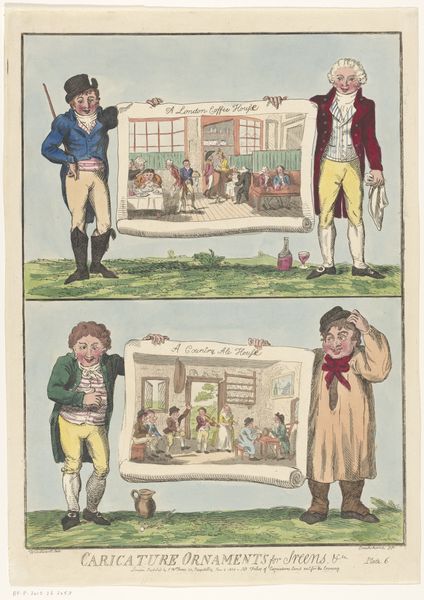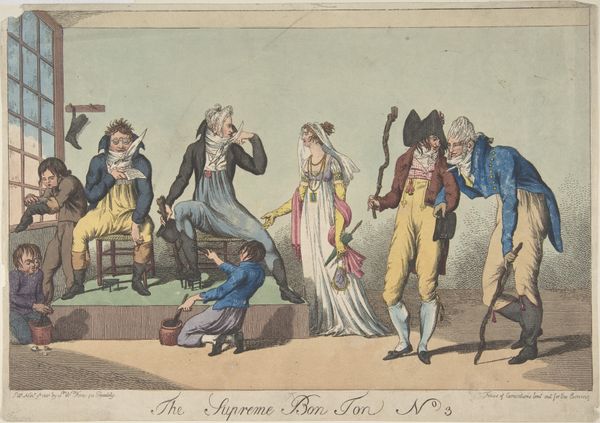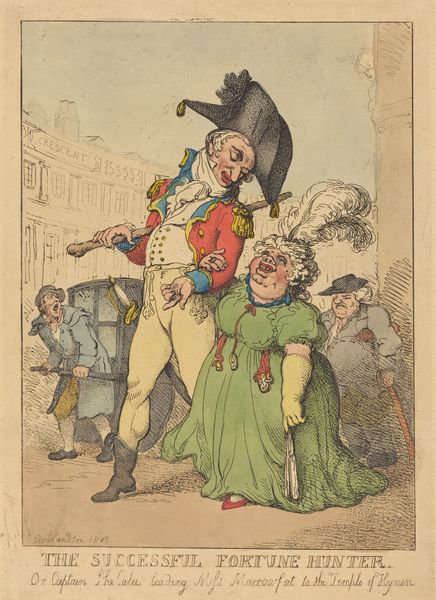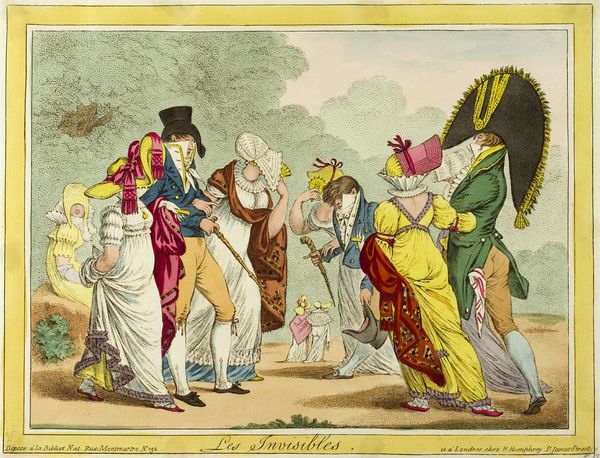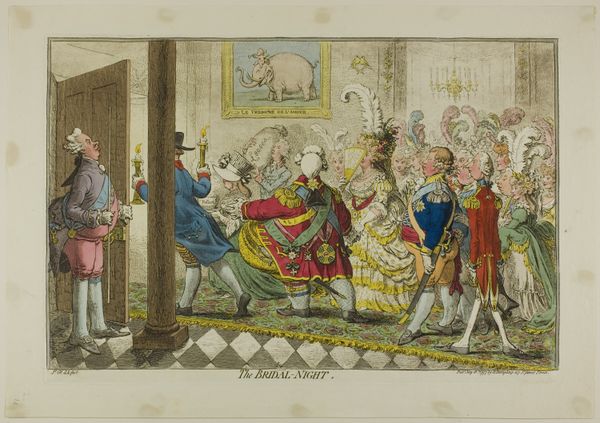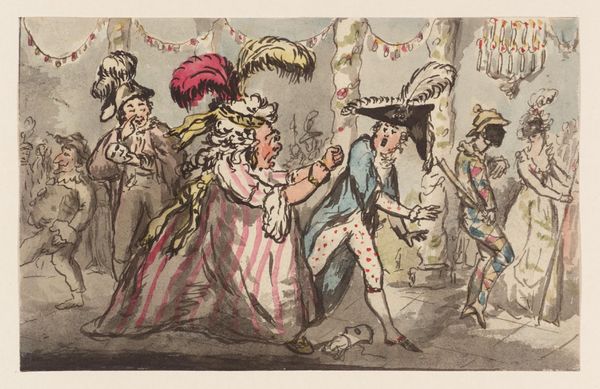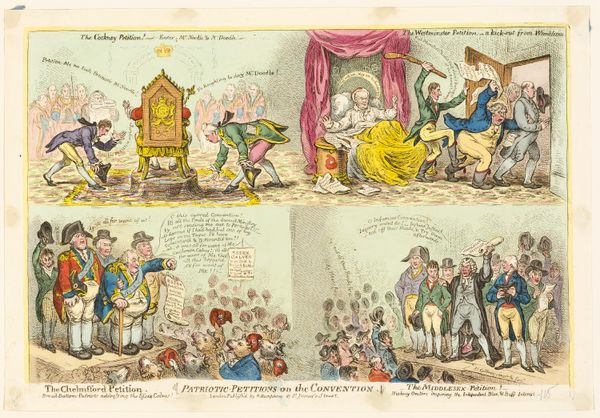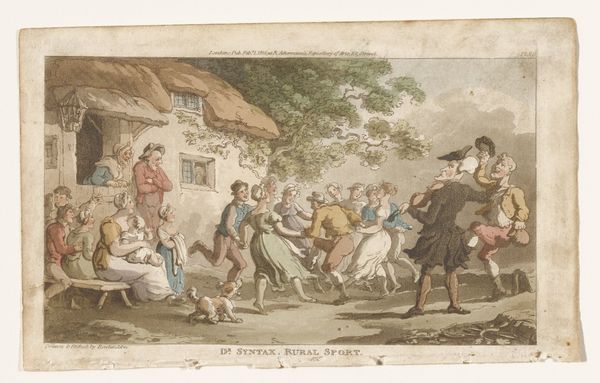
drawing, print, etching, watercolor, ink, pen
#
portrait
#
drawing
# print
#
etching
#
caricature
#
caricature
#
figuration
#
watercolor
#
ink
#
romanticism
#
line
#
pen
#
watercolour illustration
#
genre-painting
Dimensions: height 470 mm, width 337 mm
Copyright: Rijks Museum: Open Domain
Curator: This etching, entitled "Dobbelend en musicerend gezelschap," which translates to "Gambling and Music-Making Company," is attributed to George Cruikshank and dates back to around 1800-1826. The work incorporates ink and watercolor and includes a copper engraving plate. What are your immediate thoughts? Editor: It's certainly busy! There’s a real sense of chaotic energy, but also of stark class divisions presented almost comically with a theatrical flair. You see two distinct social spheres juxtaposed, each with its own forms of…entertainment? Curator: Indeed, let’s look closer at the material production and consumption aspect. Cruikshank’s choice of etching as a medium indicates the rise of print culture at the time and speaks to issues of accessibility and wider distribution. Caricature, after all, lent itself well to mass production. How do you see this impacting social commentary? Editor: Mass production allows the artist to engage directly with audiences, shaping public perception and, frankly, critiquing these two sets as embodiments of excess and privilege. One print depicts a boisterous gambling scene; the other shows what appears to be an equally raucous private concert. Each is held up by caricatured figures of high society themselves! The fox near the “private concert” image – is that symbolic to any form of marginality within these spheres? Curator: It may reflect an acknowledgement of a marginalized outsider's position. It adds another layer to our understanding, suggesting there’s an observer, perhaps one excluded from the depicted events, pointing to those left out by the society depicted, maybe the print itself is acting as that voice. Editor: This is why thinking about artwork through a social lens helps me expand its possible themes; ultimately the print offers social critique as commentary on social inequities within the early 19th Century elite, and reminds us that artistic choices were very deliberate statements within those systems. Curator: Absolutely, understanding the work of Cruikshank demands examining it on the various social, and material processes, the image raises those fundamental questions about art's role within culture, making it relevant even today. Editor: Precisely, it’s not just art for art’s sake; it's about who art is for, and who gets to decide what art means and how it operates within society. Curator: A critical perspective, allowing us to see how even apparently playful imagery engages deeply with its surrounding society.
Comments
No comments
Be the first to comment and join the conversation on the ultimate creative platform.
